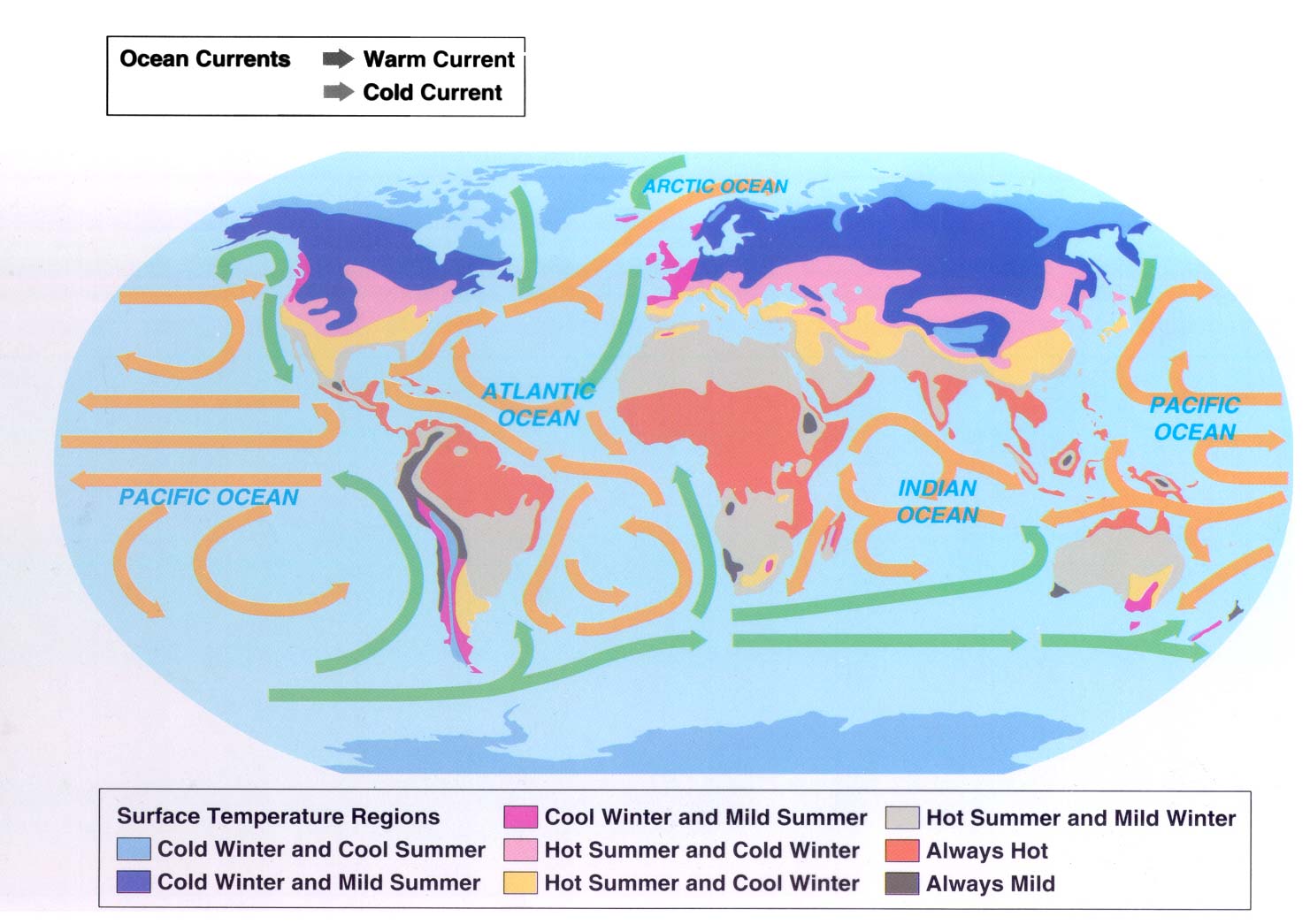|
1
WARM UP
When reading a map,
describe
the strategy you should use.
-
Read the title of the map to identify the purpose of the map.
-
Read the labels on the map.
-
Study the legend or key to help you understand the symbols used on the
map.
-
Read the questions carefully and study the map to find the answers.
-
Ask yourself if there is a pattern.
3
Attach a Copy of the Map on
World Ocean Currents and Surface Temperature Regions.
| CLICK |

|
| for a LARGER VERSION. |
|

